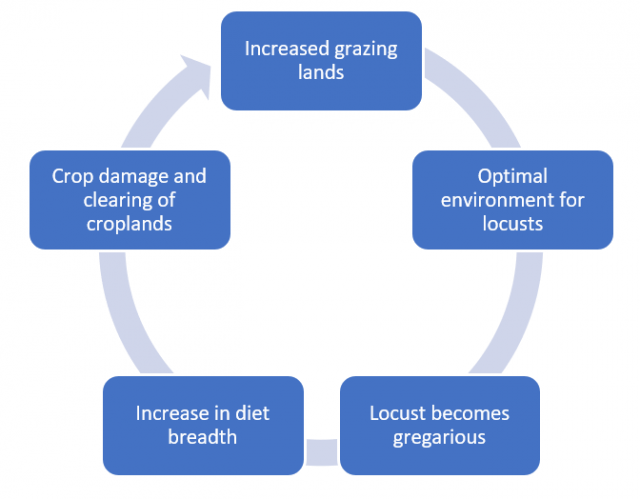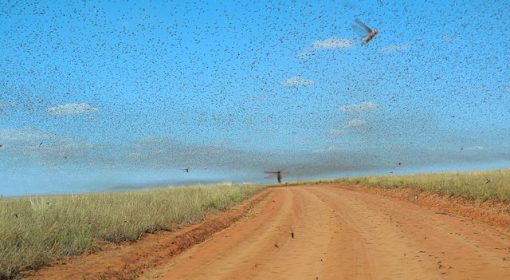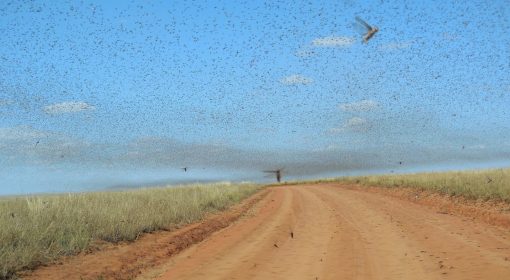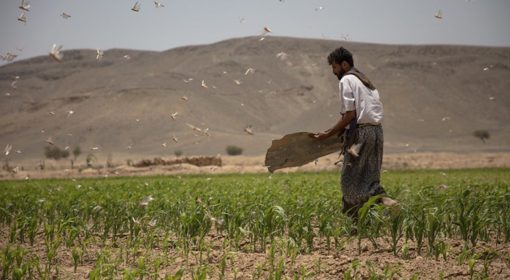Locust outbreaks and its impact on humans and crop have been well documented. However, the linkage between anthropogenic activities, land-use changes and locust species growth is still not widely reported. A change in land use pattern or agricultural intensification can lead to changes in the frequency and intensity of locust outbreaks.
A study by the Global Locust Initiative has found that locusts prefer a low-protein-more-carbohydrate-based diet. An in-depth analysis of Senegalese Grasshopper showed that overgrazing of land or intensive agricultural practices degrade the quality of soil, thus creating an optimal environment for the locust. The bare areas allow locusts to lay eggs, and the degraded soil promotes the growth of plants that are low in protein and high in carbohydrates. Soil nitrogen is also reduced when the soil gets eroded and results in nitrogen deficient plants. Since low nitrogen levels translate into low protein levels and high carbohydrates in plants, it facilitates the growth of locust species. Several lab studies have confirmed this dietary pattern of locusts that is skewed towards carbohydrates than proteins.
Locusts are known to migrate over 1000s of km spanning continents. To undergo such a migration, they must indulge in carbohydrates. Having a diet that is rich in carbohydrates helps in developing resistance against parasites. It also enhances fat reserves which help locusts in persisting in arid environments by converting them into water reserve.

Decisions on land use management and its interaction with locust biology have rippling effects which can be seen from the diagram. Locust outbreaks have occurred in areas that earlier didn’t exhibit locust phase change due to land cover and climate change. For example, there is evidence that conversion of wooded land to open fields can be encouraging to locust species.
Lessons for locust management
A sustainable approach: Use of chemicals for control of grasshoppers and locusts can adversely impact human health, crops and livestock in general. Therefore, locust management must focus on monitoring of locust population and early intervention by using chemicals when they are young.
Using GIS for predictive modelling: Remote sensing technology can be used to detect locust growth by differentiating green vegetation cover from bare brown soils. A combination of GIS data, along with rainfall and vegetation data, can help in developing models that can determine the probability of finding locusts in specific areas.
Using cultural control options: Less advanced options like altering food quality for herbivores, introducing natural enemies of grasshoppers can better manage the problem. An alternative can be to increase soil fertility and reduce overgrazing to create a hostile environment for the locusts. As such measures can be expensive, it is necessary to integrate cultural options with stakeholder perspectives to manage an outbreak.
Since the management of locust outbreak is beyond boundaries, it is imperative to connect and manage this issue globally. An initiative like Global Locust Initiative (based at Arizona State University) can bring different countries to a common platform. This can help in the integration of knowledge on land-use changes and locust biology from various sources for better management solutions.
Based on an article and the presentation by Arianne Cease, Arizona State University, at the 1st Virtual Practitioners Conference on Desert Locust Management 2020.



